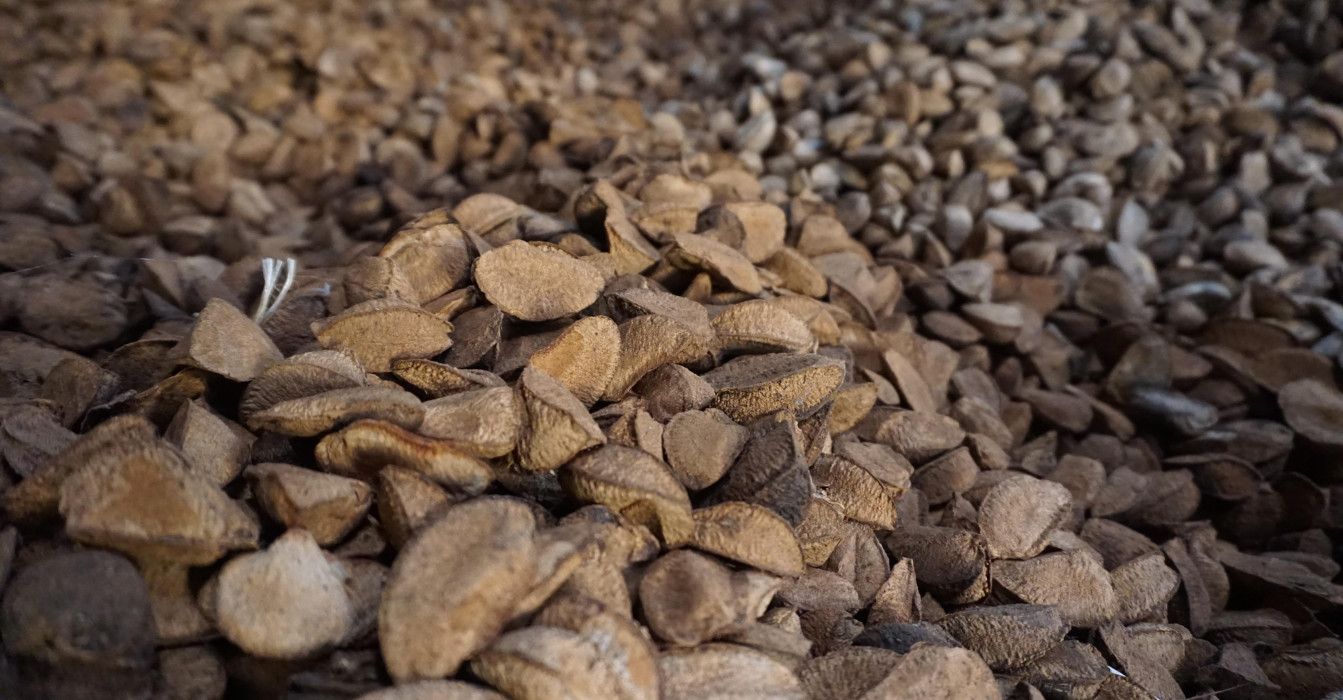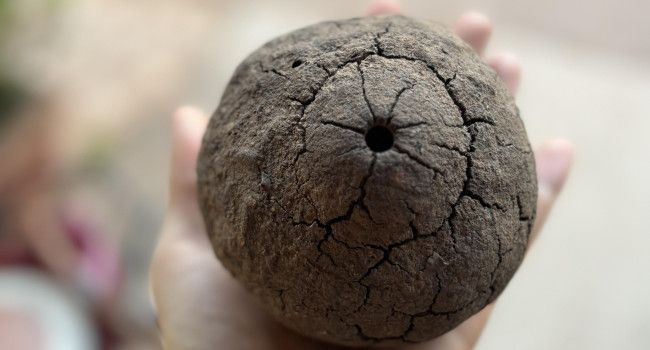The brazil nut story

So… these nuts are Brazilian, right?
Good question! Actually, we source our brazil nuts from an incredibly impressive region in the Amazon that borders Bolivia and Peru. The average brazil nut tree population is only one tree per hectares, or ten thousand square meters. A brazil nut tree can tower imposingly up to fifty meters over the other vegetation around it, and some are over two hundred years old.
How do brazil nuts grow and how are they harvested?
High up at the top are the fruits of the tree. These fruits somewhat resemble a coconut with a hard shell (see picture below), and within the fruit one can find several of the actual nuts (usually around twenty). The fruits are heavy and they fall down naturally when ripe.
Once the fruits have dropped to the ground they can be collected by hand. Between December and February, local collectors go into the Amazon forest to pick them up manually. These collectors carry the nuts in baskets on their back to local warehouses. To harvest the nuts from the fruit the collectors cut the fruits open with machetes.
Almost ready then?
Well, this is where quite the special (and BRC-certified) process then takes place. To be able to shell the nuts, they must be dried, steamed, then placed in an 80-degree Celsius oven for 24 hours and then hand-selected as final quality check. The drying takes place on special wooden shelves stacked above each other with calculated room for circulation; quite important in the local humid climate. The empty shells are used to generate the ovens for the steaming process, which means every part of the brazil nut has an application!
The precious eco-system
And while enjoying this tasty goodness, feel free to let your mind wander back to those green, lush monumental forests that harbor this special brazil nut tree. Harvests of the nut can differ every year due to changing climate and environmental conditions. Taking care of the region is essential to the protection of rare eco-systems and wildlife in it. The trees are pollinated by special species of bees, and also helpful to their regeneration are the agouti: a local rodent species somewhat resembling capibaras. Their jaws and teeth are super strong, and this makes them the only local animal that can crack the tough outer shells and feast on the nuts. Lucky them!

From tree to home
And now, after packaging and shipping, this excellent organic treat is ready to be fully enjoyed. As stated in The European Commission Knowledge for Policy Gateway, an official dietary advice in The Netherlands is to eat a handful of nuts every day. They are rich in fiber, healthy fats, protein, vitamins and important minerals such as selenium. Our organic brazil nuts are a great choice, and they are of perfect use mixed into protein bars, crackers, or raw as a snack.
